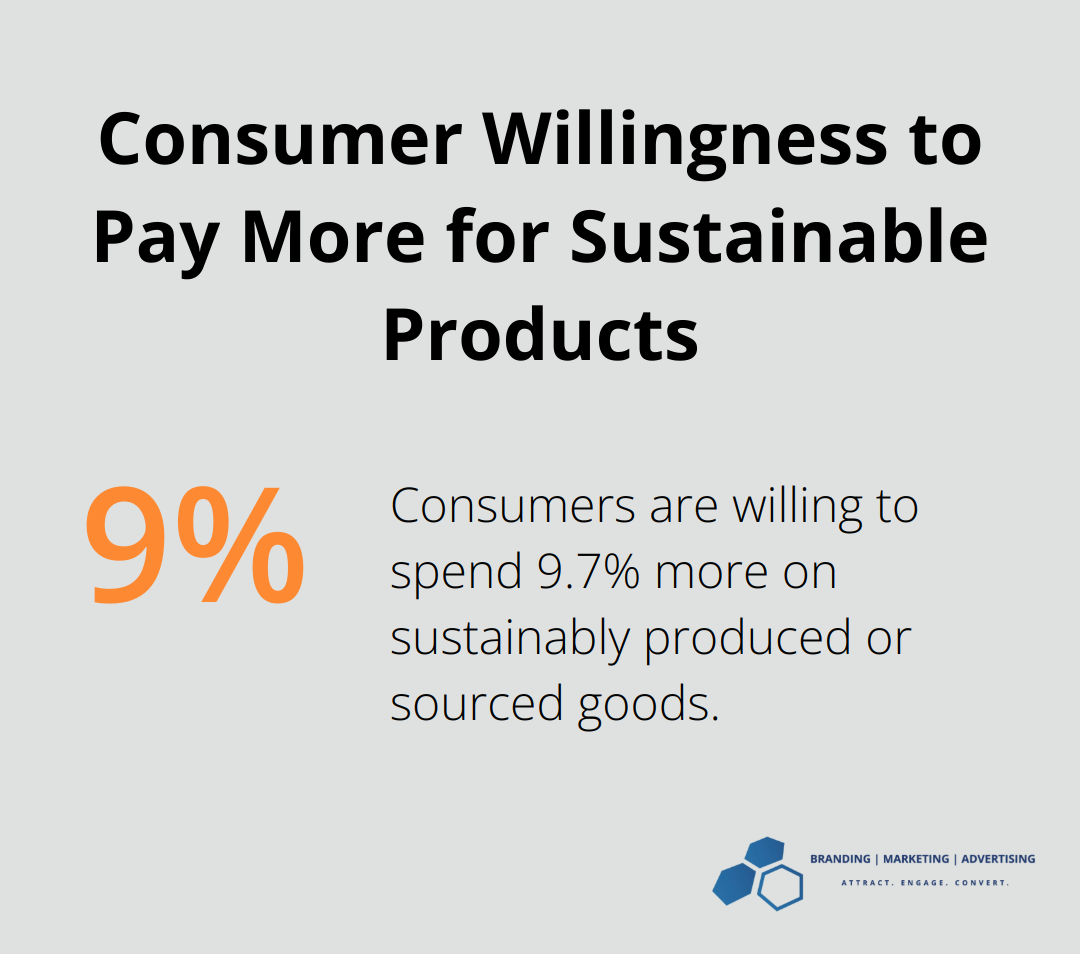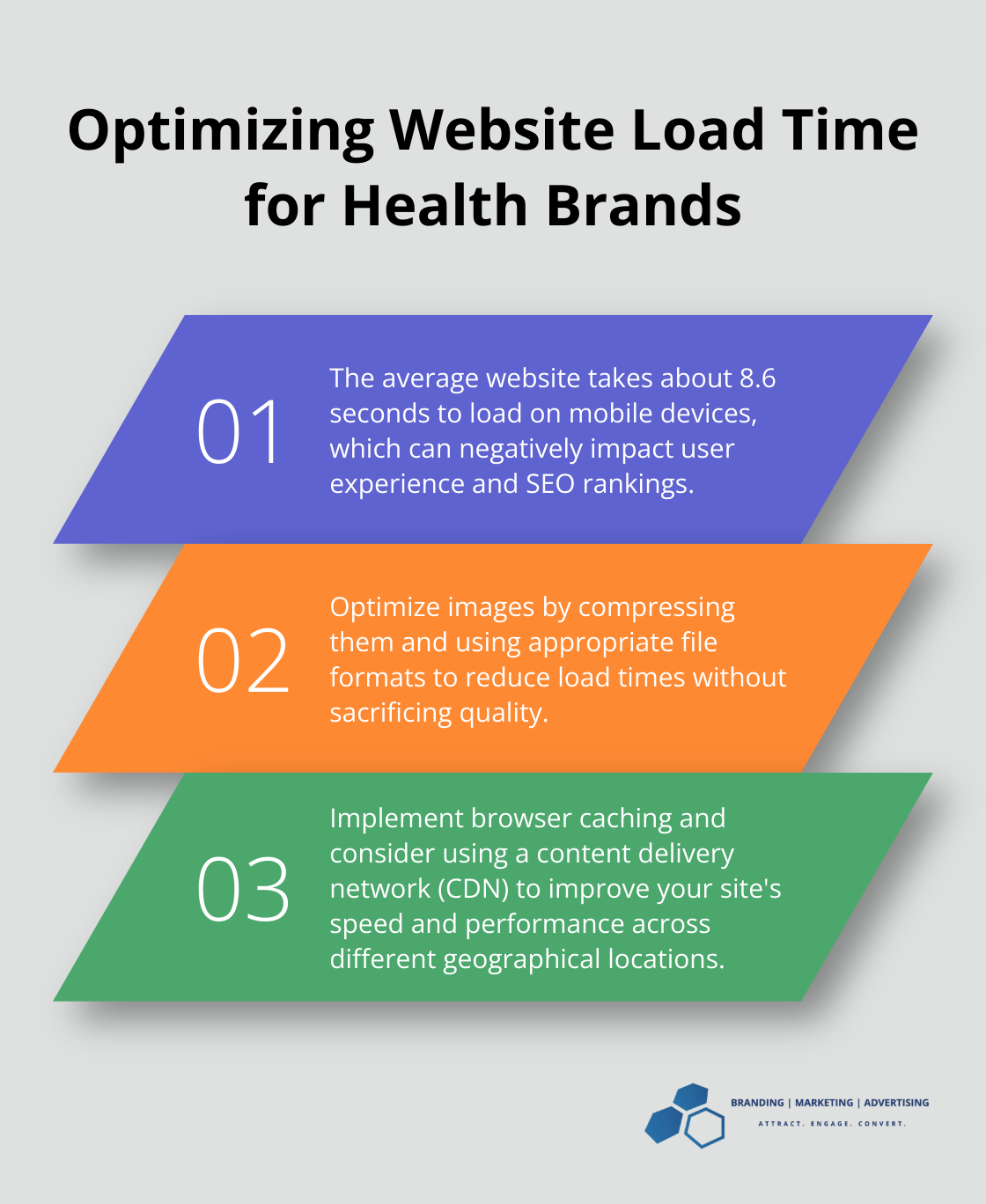How to Create Effective Health and Wellness Marketing Strategies
Health and wellness marketing strategies are evolving rapidly in today’s dynamic marketplace. At Branding | Marketing | Advertising, we’ve seen firsthand how effective campaigns can transform businesses in this sector.
Our blog post will guide you through creating impactful strategies that resonate with your target audience. From understanding consumer behavior to leveraging digital channels, we’ll cover essential tactics to elevate your health and wellness brand.
Who Are Your Health-Conscious Customers?
Decoding Demographics and Psychographics
Understanding your target audience forms the foundation of any successful health and wellness marketing strategy. Start with data collection on your current customers. Analyze age, gender, income, education, and location. But don’t stop there. Explore their lifestyles, values, and attitudes towards health. Are they busy professionals who seek quick wellness solutions? Or retirees who focus on maintaining vitality?
A 2023 McKinsey study revealed that 79% of consumers believe wellness is important, but different age groups prioritize it differently. Gen Z and Millennials focus more on mental health, while Baby Boomers emphasize physical health. Tailor your messaging to these preferences.

Spotting Health and Wellness Trends
Stay ahead by monitoring industry trends. The Global Wellness Institute reports that the wellness market reached $6.3 trillion by the end of 2023. But what drives this growth?
Plant-based diets, mental health apps, and wearable fitness technology represent just a few trending areas. Identify which trends align with your offerings and resonate with your audience.
Social marketing tools can track conversations around health topics. What do people say about gut health, sleep quality, or stress management? Use these insights to inform your product development and marketing strategies.
Analyzing Health Consumer Behavior
Understanding how consumers make health-related decisions is key. A 2024 Deloitte survey showed that 24% of respondents are willing to switch doctors to ensure access to virtual health options. This suggests an opportunity for digital health services and products.
Examine your customers’ buying patterns. Do they prefer subscription-based services or one-time purchases? Are they more likely to buy after reading reviews or watching video demonstrations?
Google Analytics provides valuable insights into how visitors interact with your website. Which health topics interest them most? What content keeps them engaged longest?
Effective health and wellness marketing addresses real needs and concerns (not just selling products). A deep understanding of your audience equips you to create marketing strategies that resonate and drive results.
Leveraging Data for Personalization
Use the data you’ve gathered to create personalized marketing campaigns. Segment your audience based on their specific health interests and behaviors. This allows you to deliver targeted content and product recommendations that speak directly to each group’s needs and preferences.
For example, you might create separate email campaigns for fitness enthusiasts, nutrition-focused individuals, and those interested in mental wellness. Each campaign can highlight relevant products, share tailored tips, and offer personalized promotions.
Building Trust Through Education
Health-conscious consumers often seek information before making purchasing decisions. Position your brand as a trusted source of health and wellness knowledge. Create educational content that addresses your audience’s questions and concerns.
This might include blog posts explaining the benefits of certain ingredients, video tutorials demonstrating proper exercise techniques, or infographics breaking down complex health topics. By providing valuable, accurate information, you build credibility and foster trust with your audience.
As we move forward, let’s explore how to develop a compelling brand message that resonates with your newly understood health-conscious audience.
How to Craft a Compelling Health Brand Message
In the competitive health and wellness industry, a compelling brand message sets you apart. Let’s explore how to create a brand message that resonates with your health-conscious audience.
Define Your Unique Value Proposition
Your unique value proposition (UVP) forms the foundation of your brand message. It distinguishes you in the crowded health and wellness market. To craft an effective UVP, focus on the specific benefits your products or services offer. Do you provide organic supplements that boost energy? Or perhaps you offer personalized nutrition plans backed by cutting-edge research?
A recent survey found that consumers are willing to spend an average of 9.7% more on sustainably produced or sourced goods, even as cost-of-living and inflationary concerns weigh. If this aligns with your offerings, make it a central part of your UVP.

Your UVP should address a real need or pain point of your target audience.
Build Trust Through Authenticity
In the health and wellness sector, trust is paramount. Consumers increasingly scrutinize exaggerated claims and quick fixes. Your brand message should emphasize authenticity and transparency. Share the story behind your products, including the sourcing of ingredients or the development process of your services.
Highlight certifications or partnerships that validate your claims. For instance, if your products are certified organic or your fitness program receives endorsements from health professionals, make this clear in your messaging. A recent report found that only 62% of people trust businesses to do what is right.
Harness the Power of Storytelling
Storytelling creates an emotional connection with your audience, making your brand more relatable and memorable. Share success stories of customers who’ve benefited from your products or services. These testimonials provide powerful social proof, especially when they come from relatable individuals (rather than celebrities).
A Nielsen study found that 92% of consumers trust recommendations from people they know, while 70% trust consumer opinions posted online. Leverage this by incorporating user-generated content into your brand storytelling. Encourage customers to share their experiences and feature these stories across your marketing channels.
Align with Health Values
Your brand message should align with the values of your health-conscious audience. This could include emphasizing sustainability, ethical sourcing, or commitment to scientific research. For example, if environmental consciousness matters to your target market, highlight your eco-friendly packaging or carbon-neutral practices.
A report by First Insight revealed that 73% of Gen Z consumers will pay more for sustainable products. If sustainability is part of your brand ethos, make it a key component of your messaging.
Maintain Consistency Across All Touchpoints
Ensure your brand message remains consistent across all marketing channels. Whether it’s your website, social media, email campaigns, or packaging, your audience should encounter the same core message. This consistency builds brand recognition and reinforces your value proposition.
Crafting a compelling brand message requires a deep understanding of your audience, a clear articulation of your unique value, and consistent delivery across all platforms. Focus on authenticity, storytelling, and alignment with health values to create a brand message that truly resonates with your health-conscious consumers.
Now that you’ve crafted your compelling brand message, it’s time to leverage digital marketing channels to reach your target audience effectively. Let’s explore how to optimize your online presence and engage with your health-conscious customers across various digital platforms.
How Digital Channels Boost Your Health Brand
In today’s digital landscape, online platforms play a pivotal role for health and wellness brands. Let’s explore how to optimize your online presence and engage with health-conscious customers across various digital platforms.
Optimize Your Health Website for Search
Search engine optimization (SEO) is essential for health brands. Start with keyword research to identify terms your target audience uses when searching for health information or products. Tools like SEMrush or Ahrefs help you discover relevant keywords and their search volumes.
Incorporate your target keywords naturally into your website content, meta descriptions, and page titles. Avoid keyword stuffing, as it can harm your rankings. Instead, create high-quality, informative content that addresses your audience’s health concerns and questions.
Page load speed impacts SEO significantly. The average website takes about 8.6 seconds to load on mobile devices. Optimize your images, use browser caching, and consider a content delivery network (CDN) to improve your site’s speed.

Create Engaging Health Content for Social Media
Social media platforms offer excellent opportunities to connect with health-conscious consumers. Tailor your content to each platform’s strengths.
Instagram excels at visual content. Share before-and-after photos of customers who’ve benefited from your products, or create infographics explaining complex health topics. Use Instagram Stories to showcase behind-the-scenes glimpses of your product development or share quick health tips.
Facebook builds community effectively. Create a group where customers share their health journeys, ask questions, and support each other. This fosters brand loyalty and provides valuable insights into your customers’ needs and concerns.
Video content gains popularity across all platforms. Create short, informative videos about health topics related to your products. For example, if you sell supplements, produce a series explaining different vitamins and their benefits.
Implement Effective Email Marketing Campaigns
Email marketing remains one of the most effective digital channels for health brands. Segment your email list based on customer interests and behaviors to deliver more targeted content.
Create separate email streams for customers interested in weight loss, stress management, or skincare. This allows you to provide more relevant content and product recommendations, increasing engagement and conversions.
Personalization is key in email marketing. Use your customer’s name in the subject line and email body. Email subject lines that use personalization can increase open rates by 10-14% across industries.
Don’t focus solely on selling. Provide value in your emails by sharing health tips, recipes, or workout routines. This positions your brand as a helpful resource, not just a product pusher.
Leverage Influencer Partnerships
Influencer marketing can be particularly effective in the health and wellness space. Choose influencers whose values align with your brand and who have a genuine interest in health.
Micro-influencers (those with 10,000 to 100,000 followers) often have higher engagement rates than macro-influencers. They’re typically more affordable and can provide a more authentic connection with your target audience.
Prioritize authenticity when working with influencers. Allow influencers to try your products and share their honest experiences instead of using scripted posts. This approach builds trust with their followers and can lead to more genuine endorsements.
Comply with FTC guidelines regarding influencer partnerships. Label all sponsored content clearly to maintain transparency with consumers.
These digital channels can significantly increase reach and engagement for health and wellness brands. Provide value at every touchpoint, whether through informative content, personalized emails, or authentic influencer partnerships.
Final Thoughts
Effective health and wellness marketing strategies require a deep understanding of your target audience and a compelling brand message. You must identify key demographics, analyze consumer behavior, and stay attuned to industry trends to create campaigns that resonate with health-conscious customers. Digital marketing channels play a vital role in today’s landscape, and you should optimize your website, create engaging social media content, and implement targeted email campaigns.
Adaptability is essential in the ever-evolving health and wellness industry. You need to stay informed about emerging trends, technological advancements, and shifting consumer preferences. Continuous improvement and measurement are critical for long-term success, and you should regularly analyze the performance of your marketing efforts using tools like Google Analytics (and social media insights).
Branding | Marketing | Advertising specializes in creating and implementing comprehensive health and wellness marketing strategies. Our team of experts can help you navigate the complexities of digital marketing, ensuring your brand stands out in the competitive health and wellness landscape. You’ll position yourself to thrive in the dynamic world of health and wellness marketing through consistent application of these strategies and attunement to your audience’s needs.












